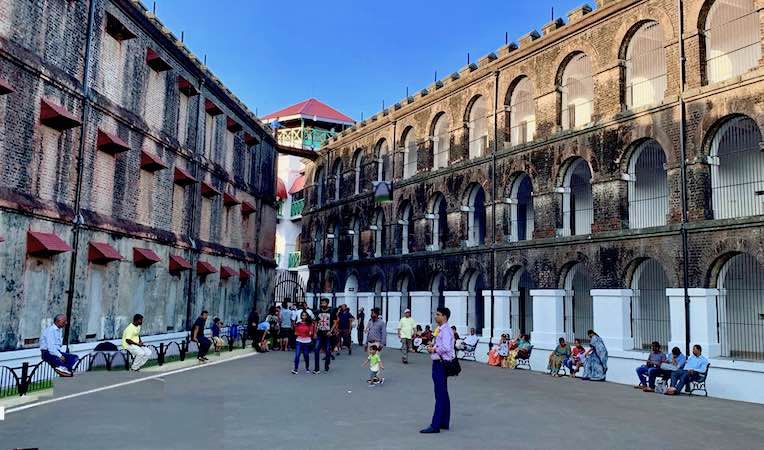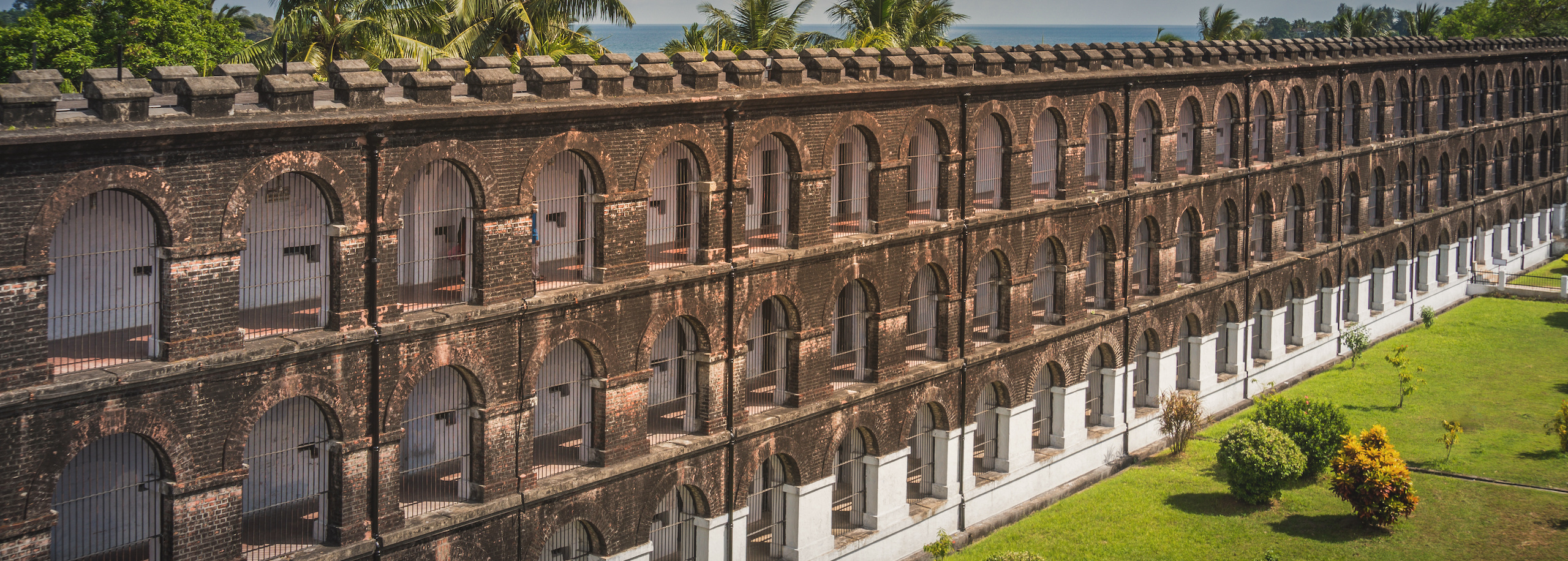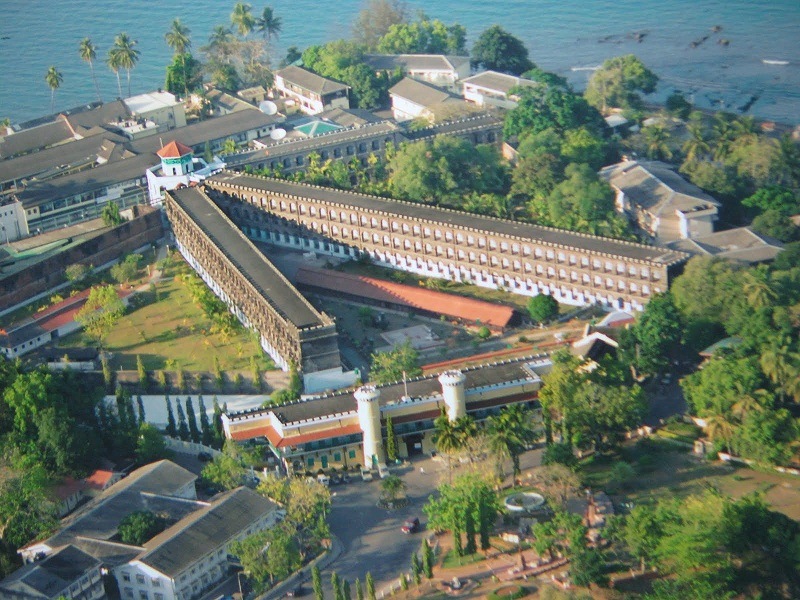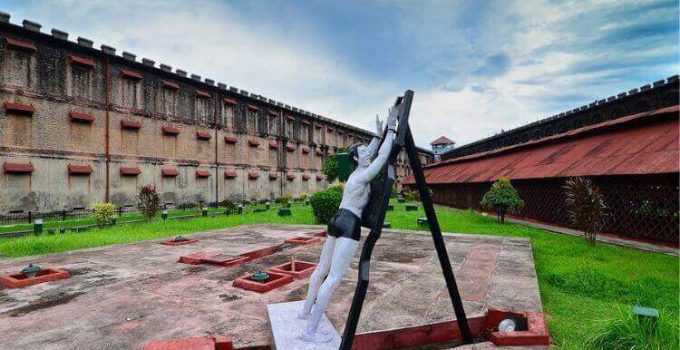Welcome to the hauntingly intriguing world of the Cellular Jail in the Andaman Islands. This historical monument stands as a testament to the dark past that India endured during the struggle for independence. Built by the British in the late 19th century, the Cellular Jail served as a prison for freedom fighters who dared to challenge British imperialism. Stepping into the Cellular Jail is like stepping back in time, where the walls whisper stories of resilience and sacrifice. This iconic structure, with its gengtoto seven wings radiating from a central watchtower, was designed to isolate prisoners from one another, ensuring that their spirit of resistance could not spread.
Each cell, small and suffocating, housed numerous inmates enduring unimaginable hardships. Today, the Cellular Jail stands as a National Memorial, reminding us of the sacrifices made by countless brave souls. It serves as a chilling reminder of the atrocities committed by the British Empire and the indomitable spirit of those who fought for freedom. Stay tuned to discover more about the fascinating history, architectural marvels, and soul-stirring stories that surround the Cellular Jail, unlocking the secrets of India’s struggle for independence.

Contents
- 1 Historical Significance of Cellular Jail
- 2 Construction and Architecture of Cellular Jail
- 3 Life Inside Cellular Jail
- 4 Famous Inmates of Cellular Jail
- 5 The Role of Cellular Jail in India’s Struggle for Independence
- 6 Restoration and Preservation Efforts for Cellular Jail
- 7 Visiting Cellular Jail Today
- 8 Other Attractions near Cellular Jail
- 9 Conclusion
- 10 Author
Historical Significance of Cellular Jail
The Cellular Jail, also known as Kālā Pānī (Black Waters), holds an important place in the annals of India’s struggle for independence. The British colonial authorities used it as a punitive measure to crush the spirit of Indian revolutionaries who were striving to free India from the shackles of British rule. The jail, located in the remote Andaman Islands, was deliberately chosen as a site of exile, far from the mainland.
The concept of using penal settlement as a tool of political repression was not new. The British had already been using Andaman as a penal colony since 1858, following the First War of Indian Independence. However, with the growing wave of nationalism in the late 19th century, the British felt the need for a more secure and isolated prison. This led to the construction of the Cellular Jail.
The historical significance of the Cellular Jail lies in the fact that it stands as a symbol of colonial oppression and the struggle for freedom. It is a place where the fight for freedom took a different form, one of endurance and resilience against inhuman conditions. The jail represents the worst of colonial atrocities and the best of the human spirit that fought against it.
Construction and Architecture of Cellular Jail
The Cellular Jail was an architectural marvel of its time, designed to serve a sinister purpose – total isolation of prisoners. The construction of this monstrous structure began in 1896 and was completed in 1906. It was built by the prisoners themselves, who were forced to work under grueling conditions.
The design of the jail was based on the ‘Panopticon’ concept. The prison was shaped like a star with seven wings radiating from a central tower. The central tower served as a watchtower for the guards, who could keep an eye on all the prisoners without them knowing. Each wing had three stories and consisted of individual cells, hence the name ‘Cellular Jail’.
The cells were small and suffocating, each measuring about 13.5 by 7.5 feet. The doors were small, and the windows were mere slits, blocking any view of the outside world. The design ensured that no two prisoners in adjacent cells could communicate with each other, crushing any chance of a collective uprising. This grim architecture served as a physical manifestation of the oppressive regime.
Life Inside Cellular Jail
Life inside the Cellular Jail was a living hell for the inmates. The prison was infamous for its severe punishment and inhuman living conditions. The inmates were subjected to hard labor, which included tasks like rope making, oil extraction, and construction work. The prisoners were given a meager diet and were often subjected to brutal physical and mental torture.
Apart from the physical hardships, the psychological torment of solitary confinement was unbearable for many. The lack of human contact and the constant surveillance broke the spirit of many inmates. There were instances of suicide and mental breakdowns.
Despite these horrific conditions, the inmates did not lose their spirit. They devised ingenious ways to communicate with each other and kept the flame of resistance alive. Stories of their bravery, resilience, and unbreakable spirit still echo in the walls of the Cellular Jail.

Famous Inmates of Cellular Jail
The Cellular Jail was home to many notable freedom fighters. Among them was Vinayak Damodar Savarkar, a fierce nationalist and social reformer, who was sentenced to two terms of life imprisonment. His cell in the jail is now a protected monument.
Another notable inmate was Yogendra Shukla, one of the founding members of the Hindustan Socialist Republican Association (HSRA). He was a key figure in the revolutionary movements in Bihar and the United Provinces.
Barindra Kumar Ghosh, the younger brother of Aurobindo Ghosh, was also incarcerated in the Cellular Jail. He was involved in the Alipore Bomb Case and was sentenced to transportation for life.
The Role of Cellular Jail in India’s Struggle for Independence
The Cellular Jail played a significant role in India’s struggle for independence. It served as a tool of colonial suppression, but ironically, it also became a symbol of resistance and sacrifice.
The stories of the atrocities committed within the walls of the Cellular Jail fueled the flames of the freedom struggle on the mainland. The horrifying tales of torture and inhuman treatment of the prisoners sparked outrage and intensified the freedom movement.
The inmates of the Cellular Jail, through their endurance and resilience, became symbols of courage and resistance. Their sacrifice and struggle inspired many others to join the freedom movement.
Restoration and Preservation Efforts for Cellular Jail
The Cellular Jail was declared a National Memorial in 1969. Since then, efforts have been made to restore and preserve this iconic structure. The Government of India has taken steps to maintain the building and its surrounding areas.
In 1997, a Sound and Light show was introduced in the Cellular Jail premises. The show, narrated by the famous Bollywood actor Om Puri, tells the poignant story of the jail and its inmates. It brings to life the horrific conditions under which the freedom fighters were kept and their indomitable spirit.
Several cells have been converted into galleries, showcasing photographs and exhibits related to the freedom struggle. The central tower now houses a museum that provides a glimpse into the history of the jail.
Visiting Cellular Jail Today
Today, the Cellular Jail stands as a symbol of India’s struggle for independence. It is a must-visit for anyone traveling to the Andaman Islands. Visitors can explore the jail premises, visit the museum, and witness the captivating Sound and Light show.
The view from the top of the central tower is spectacular. It offers a panoramic view of the surrounding sea and islands. The serene beauty of the place stands in stark contrast to the violent past of the jail.
Visiting the Cellular Jail is a humbling experience, reminding us of the sacrifices made by the freedom fighters. It is a place that evokes a sense of pride and gratitude for those who fought for our freedom.

Other Attractions near Cellular Jail
Apart from the Cellular Jail, the Andaman Islands have many other attractions for tourists. The pristine beaches, clear blue waters, and rich marine life make the islands a paradise for nature lovers.
The Radhanagar Beach, rated as one of the best beaches in Asia, is a must-visit. The Ross Island, once the administrative headquarters of the British, is another popular tourist spot. It houses the ruins of old buildings like the church, swimming pool, and chief commissioner’s house.
For history enthusiasts, the Anthropological Museum provides a glimpse into the indigenous tribes of the Andaman and Nicobar Islands. The Samudrika Naval Marine Museum is another interesting place to visit, showcasing the rich marine life of the islands.
Conclusion
The Cellular Jail, with its grim past and resilient spirit, is a significant chapter in the history of India’s struggle for independence. It stands as a symbol of the atrocities of colonial rule and the indomitable spirit of the freedom fighters.
Visiting the Cellular Jail is not just a journey through the annals of history, but also a tribute to the brave hearts who endured immense hardships for the freedom of our nation. As we walk through the corridors of the jail, we are reminded of the price paid for the freedom we enjoy today. If you found this journey through India’s struggle for independence intriguing, we encourage you to continue your exploration by reading our article about BlackRock, offering insights into another compelling facet of history and contemporary relevance. Thank you for accompanying us on this enlightening voyage through time and memory.




